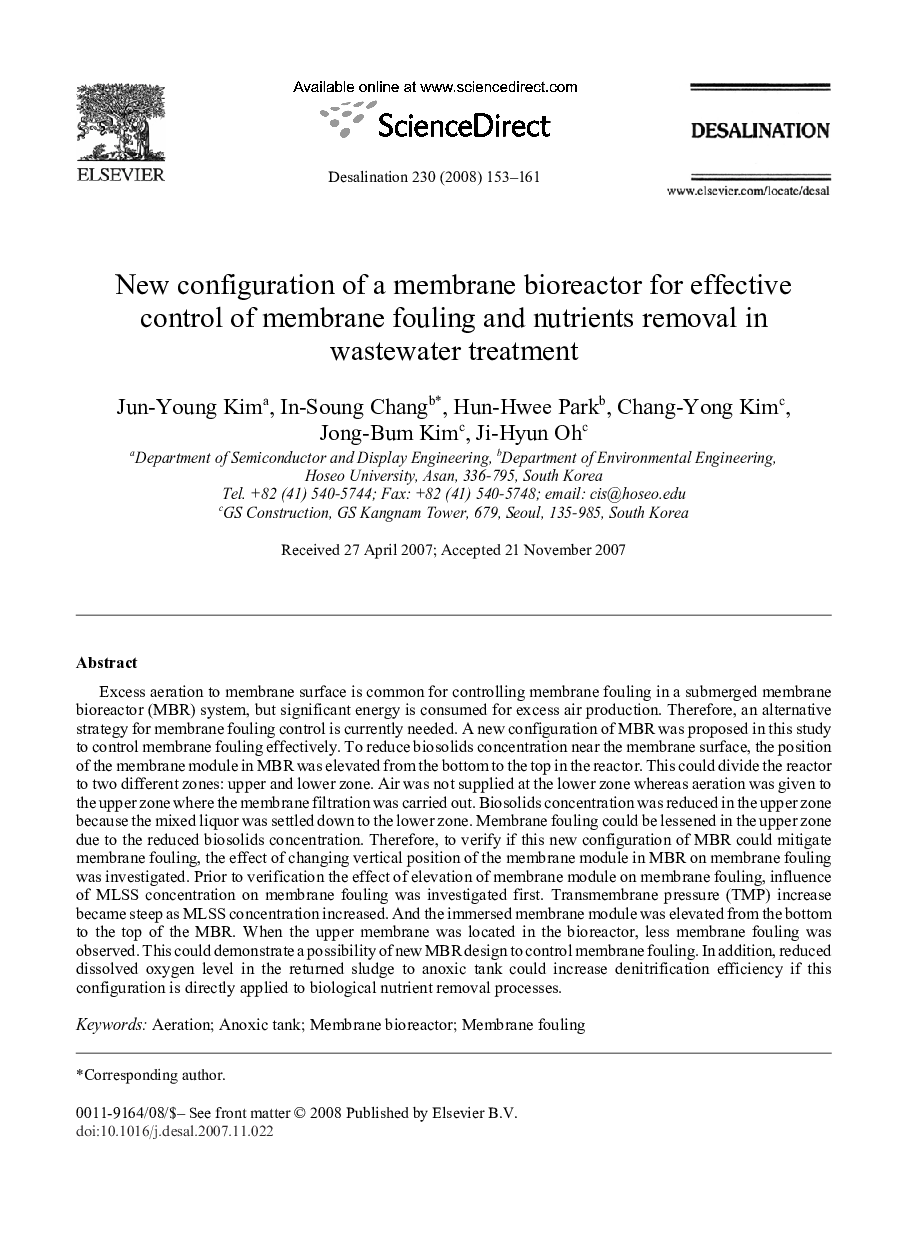| کد مقاله | کد نشریه | سال انتشار | مقاله انگلیسی | نسخه تمام متن |
|---|---|---|---|---|
| 627231 | 1455460 | 2008 | 9 صفحه PDF | دانلود رایگان |

Excess aeration to membrane surface is common for controlling membrane fouling in a submerged membrane bioreactor (MBR) system, but significant energy is consumed for excess air production. Therefore, an alternative strategy for membrane fouling control is currently needed. A new configuration of MBR was proposed in this study to control membrane fouling effectively. To reduce biosolids concentration near the membrane surface, the position of the membrane module in MBR was elevated from the bottom to the top in the reactor. This could divide the reactor to two different zones: upper and lower zone. Air was not supplied at the lower zone whereas aeration was given to the upper zone where the membrane filtration was carried out. Biosolids concentration was reduced in the upper zone because the mixed liquor was settled down to the lower zone. Membrane fouling could be lessened in the upper zone due to the reduced biosolids concentration. Therefore, to verify if this new configuration of MBR could mitigate membrane fouling, the effect of changing vertical position of the membrane module in MBR on membrane fouling was investigated. Prior to verification the effect of elevation of membrane module on membrane fouling, influence of MLSS concentration on membrane fouling was investigated first. Transmembrane pressure (TMP) increase became steep as MLSS concentration increased. And the immersed membrane module was elevated from the bottom to the top of the MBR. When the upper membrane was located in the bioreactor, less membrane fouling was observed. This could demonstrate a possibility of new MBR design to control membrane fouling. In addition, reduced dissolved oxygen level in the returned sludge to anoxic tank could increase denitrification efficiency if this configuration is directly applied to biological nutrient removal processes.
Journal: Desalination - Volume 230, Issues 1–3, 30 September 2008, Pages 153-161